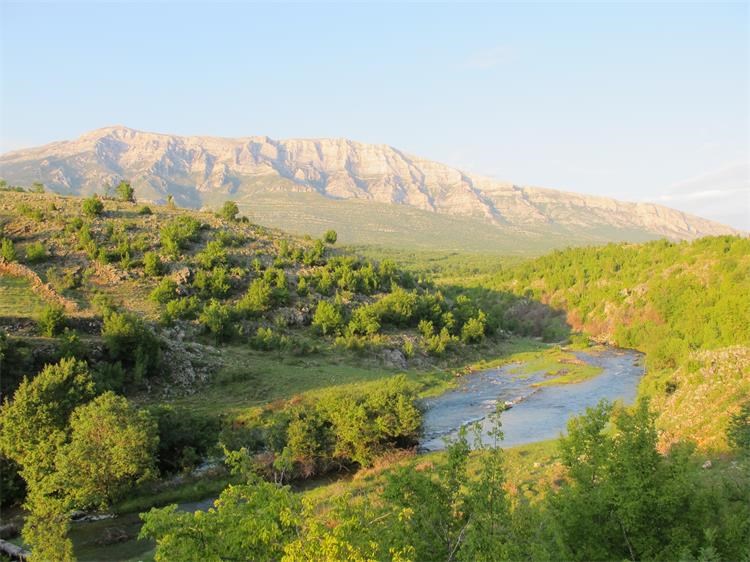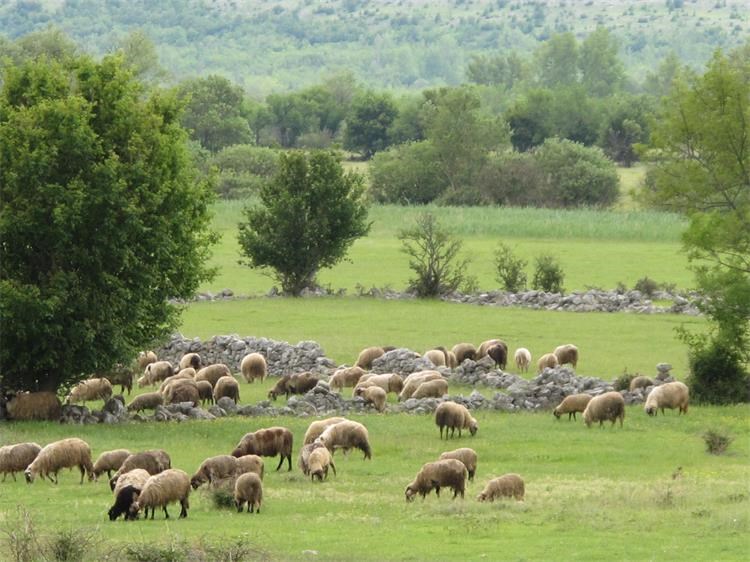Vrana Lake Nature Park: Perfect for Both Peace and Action
June 19, 2022 - Ever paid a visit to the gorgeous and truly unique Vrana lake nature park?
It’s that time again, when the ancient streets of coastal Croatia are full of traffic. It's the same thing for the roads, especially the Adriatic Highway, probably one of the most scenic routes you could ever drive along. No matter which part of Croatia’s coastline you're heading to, incredible views are guaranteed. Between Zadar and Šibenik, a real natural phenomenon can be sighted – the Adriatic Sea and the freshwater Vrana lake separated by less than one kilometre of mainland.

Besides of being one of Croatia‘s largest natural lakes, it has been pronounced a nature park as well. Stretching from Pakoštane to Pirovac, blessing the two Croatian counties of Zadar and Šibenik-Knin at once, Vrana lake nature park covers about 57 square kilometres in total. A ridge, the Prosika canal, lets salt water flow down into the freshwater lake, making it possible for both salt water and freshwater fish to live there – a fact that attracts both sport and recreational fishing enthusiasts.

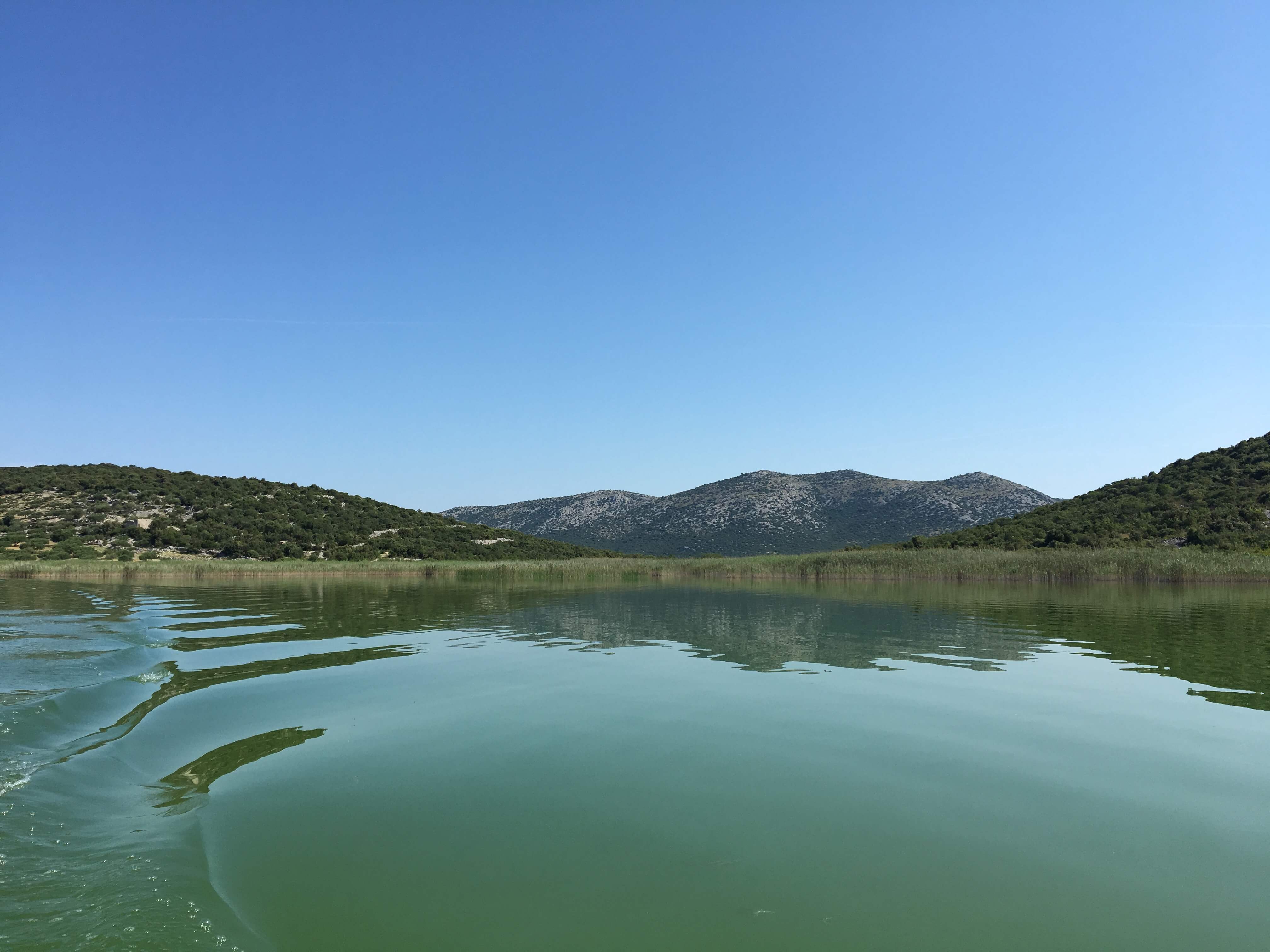
There are plenty more opportunities on offer at the gorgeous Vrana lake nature park aside from fishing, such as swimming or kayaking for example. One can also choose horseback riding or even try out swimming with the horses. Besides the abundant water activities, Vrana lake nature park also boasts 40 kilometres of impressive cycling and hiking trails with stunning views on offer. Several display boards providing educational information dotted around Vrana lake can be found as well.
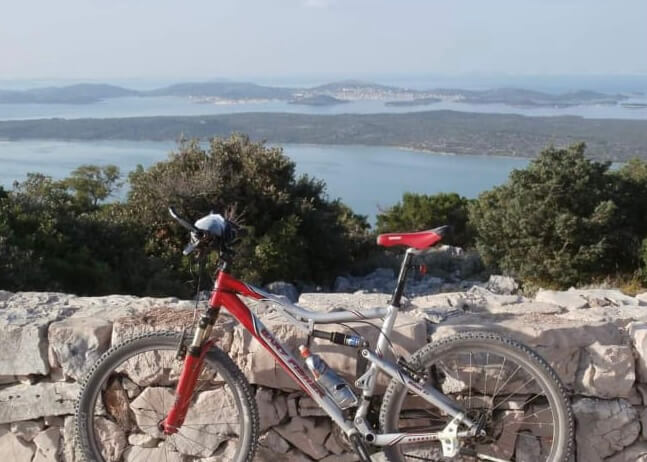
What makes Vrana Lake nature park even more special, is its declaration as an Ornithological Reserve and its listing as one of the “Important Bird Areas in Europe” with more than 256 bird species being registered as living there. Off-season, particularly during the winter, over 100,000 aquatic birds seek out Vrana lake as their seasonal home. Birds aside, numerous other fascinating animal species can be found there as well.
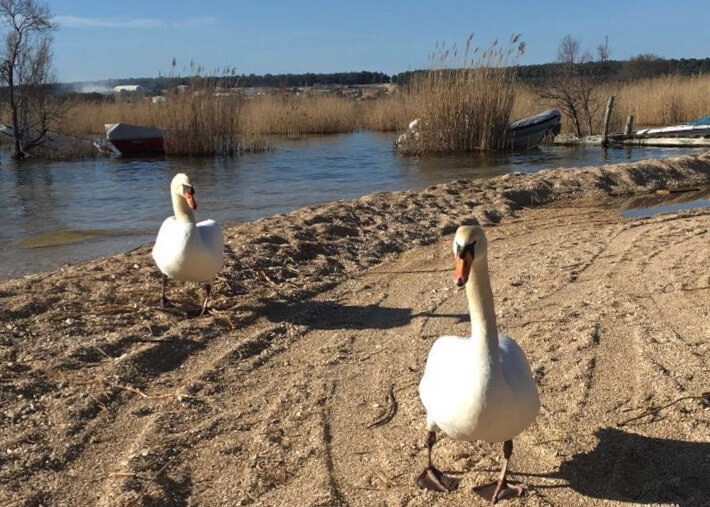
From the “Kamenjak” viewpoint, Vrana lake nature park’s highest peak, one can catch sight of the rugged coastline, the Kornati archipelago, the Mediterranean swamp as well as the rural area of Ravni Kotari all at once – an amazing picture that one can hardly ever forget. During the year, some traditional festivities take place at the top, right in front of the Chapel of All Saints. Moreover, the main path up the hill is known as the Way of the Cross with its 14 stations regularly walked by locals and tourists.
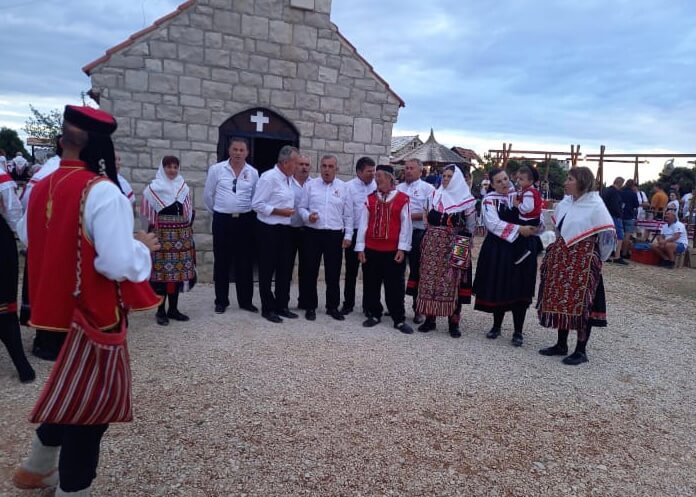
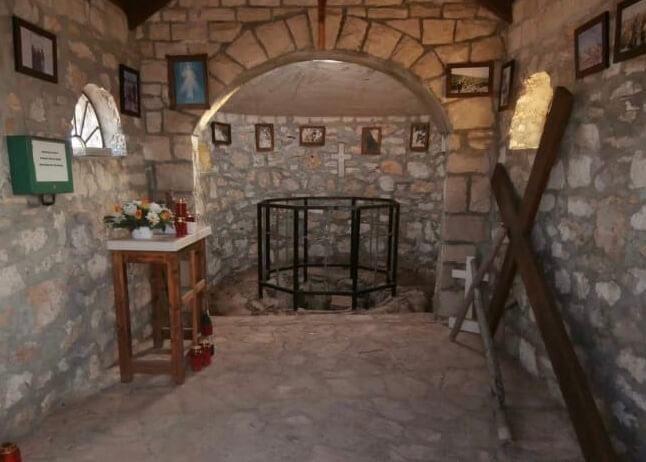
A traditional Dalmatian tavern makes it possible to enjoy local delicacies while admiring the picturesque surroundings up there, and in the mornings one can see the beautiful shades of blue of both the lake and the sea, and soak up the amazing sunsets in the evenings. At this place, one thing is sure – unforgettable memories are guaranteed.
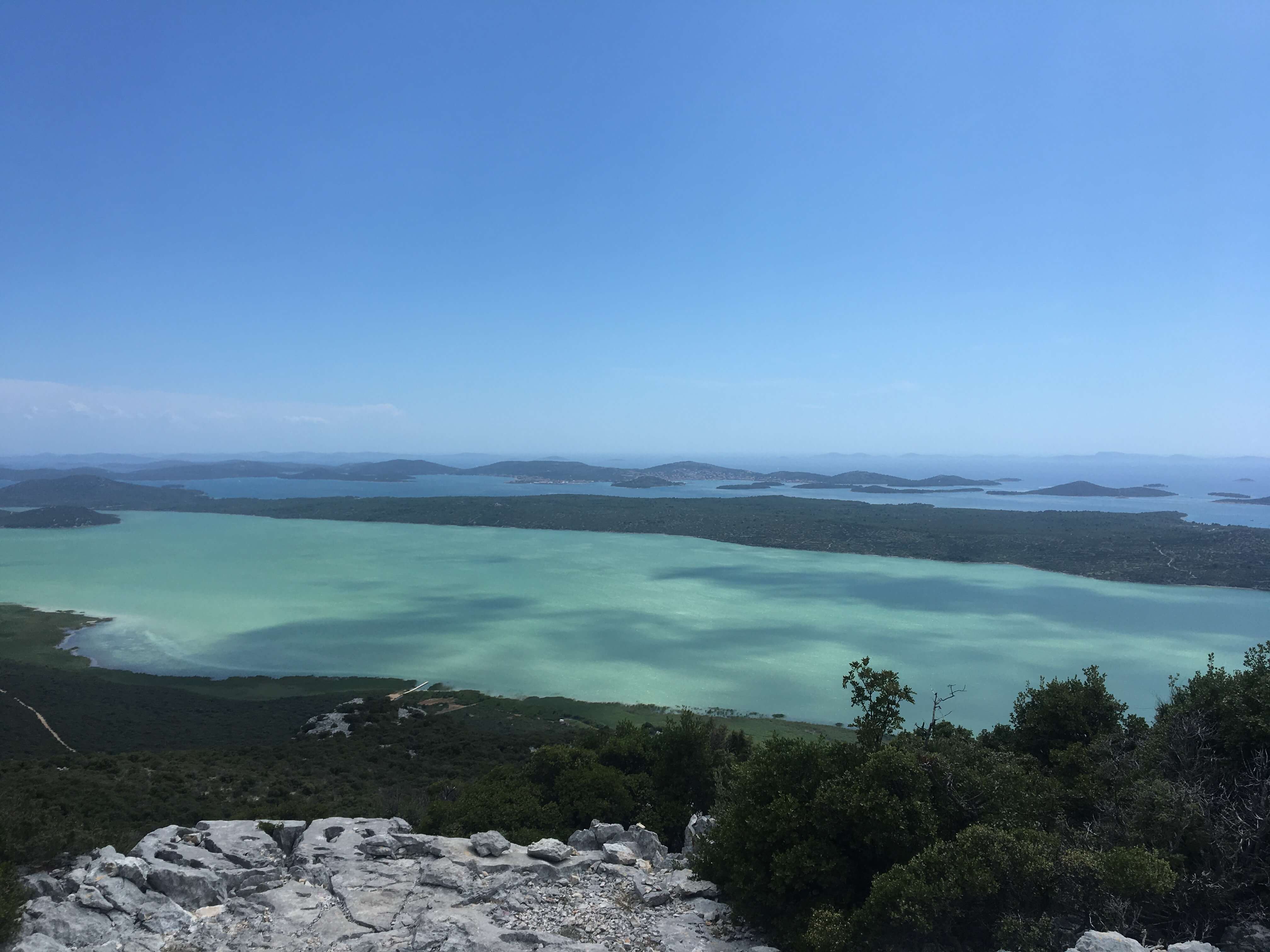
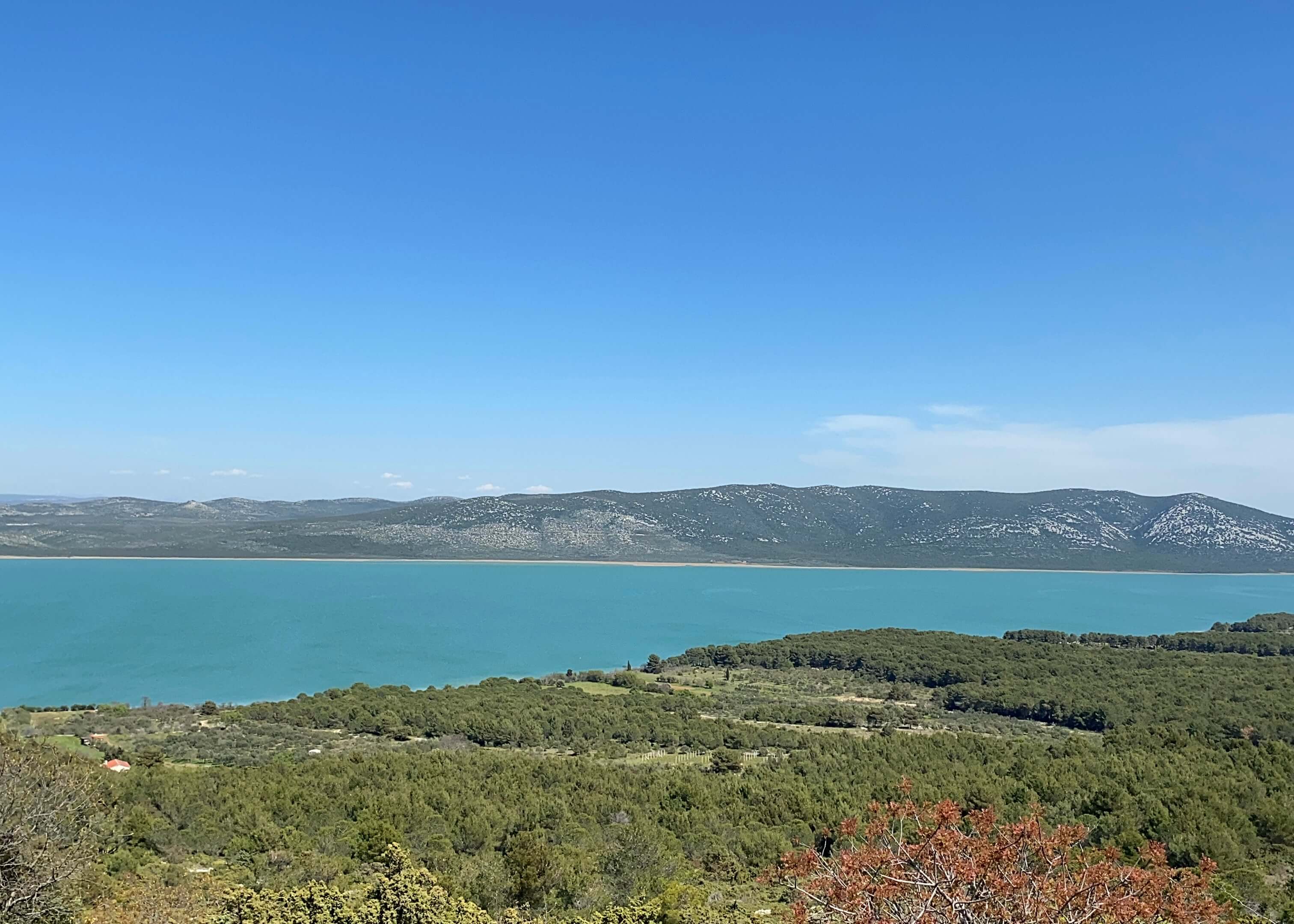
For more on Croatia's nature parks, make sure to check out our dedicated travel section.
5 Ways to Get a Free Week’s Stay in Croatia's Dream Destinations
February 24th, 2022 - If you happen to love spending time outdoors and have a few days to spare this spring or summer, Croatia’s national and nature parks offer amazing volunteering opportunities that involve a free week’s stay in some of the most spectacular locations in the country
We prepared a selection of five attractive volunteer programmes that are 5-10 days long and require up to 6 hours of work a day, with free accommodation, meals and transportation provided to participants. English speakers are encouraged to apply, as knowledge of Croatian isn’t a requirement for any of the following roles:
1. Dry Stone Restorer in Mljet National Park
Become a guardian of the past by restoring ancient dry stone walls in Mljet National Park. Traditional dry stone construction is inscribed in the list of intangible cultural assets of the Republic of Croatia, which means you’d literally help restore and preserve precious cultural heritage on Mljet island!
Volunteers will learn how to build and fix up walls, stairways and other dry stone structures. The job also involves clearing existing dry stone structures of vegetation, simple processing of stone using hand tools, and photographing dry stone walls before and after restoration.
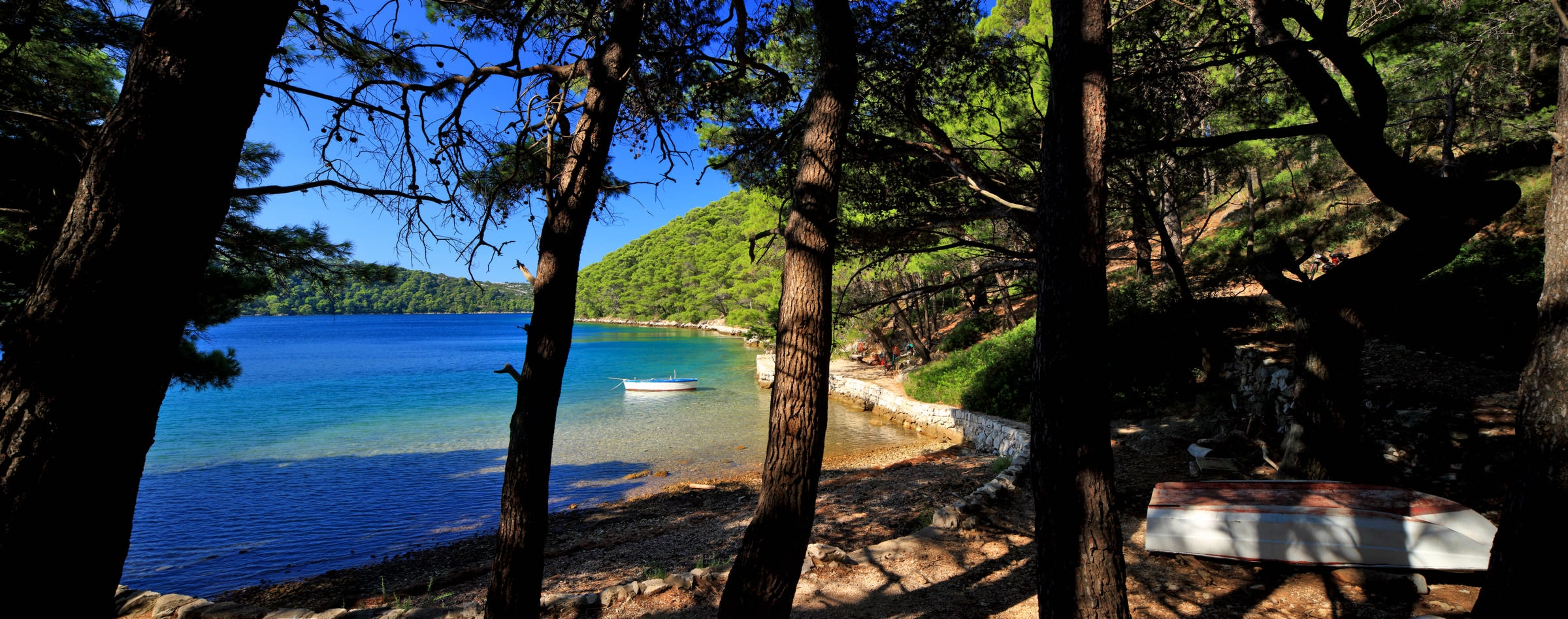 Mljet island / Photo © Mario Romulic
Mljet island / Photo © Mario Romulic
The programme takes place in April and is seven days long, including six days of work and one day off. Volunteers are expected to work six hours a day with a one-hour break, but considering that the physical work involved in this particular programme can be strenuous, the number or working hours can be reduced if needed.
All necessary tools will be provided by the Park. Accommodation is provided free of charge on Mljet island in the Collier building owned by the Park, which has seven rooms equipped with bunk beds, toilets, showers, a kitchen and a living room. Meals are also provided free of charge, with the Park delivering groceries to volunteers or providing free meals at the local hotel.
If stonemasonry isn’t your cup of tea and you’d prefer a less hands-on kind of creative work, may we suggest another volunteer programme on Mljet island:
2. Photo Amateur in Mljet National Park
A dream come true for anyone who loves island hopping and snapping pics of stunning landscapes (don’t we all?), this programme involves photographing the scenery and events in Mljet National Park in the period between April and June.
Depending on the time of year, volunteers will be required to photograph various locations, events and activities on Mljet island using their own gear. You’ll be capturing the island’s flora and fauna, cultural monuments and landmarks, historic sites, enchanting landscapes and fun summer events.
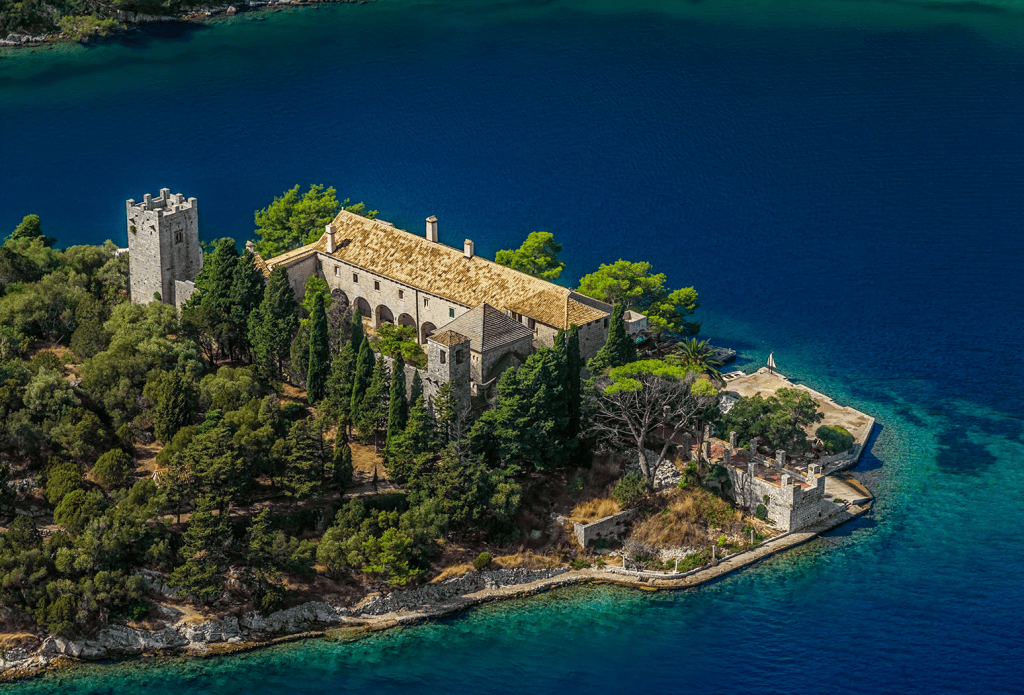 Mljet National Park / Photo: volonteri.parkovihrvatske.hr
Mljet National Park / Photo: volonteri.parkovihrvatske.hr
Those who choose to participate in this particular programme will sign a statement of the assignment of the photos to Mljet National Park. You’ll have to submit the photos shortly after the programme is over, and can look forward to seeing them featured in the Park’s publications in Croatia and abroad.
A minimum of one DSLR camera with a lens is required to partake in this programme.
You’ll have plenty of time to explore the island on your own time, and there’s no shortage of things to do: there are over 40 kilometres of hiking and cycling trails, you can rent a kayak or canoe to explore the saltwater lakes on Mljet, or take diving lessons with a certified instructor.
For all Mljet-based programmes, volunteers are to bear the cost of travel to Mljet island, and the Park will provide transport from the ferry port on Mljet to the place of accommodation.
3. Gull Catcher in Kornati National Park
Are you a fan of the great outdoors and love being in close contact with wildlife? Consider becoming a seagull catcher in Kornati National Park. Don't worry, you'll be releasing them too!
You’ll be joining the Park’s experts as they band and monitor Caspian gulls in the stunning Kornati archipelago, specifically on a few islands where seagulls are known to nest.
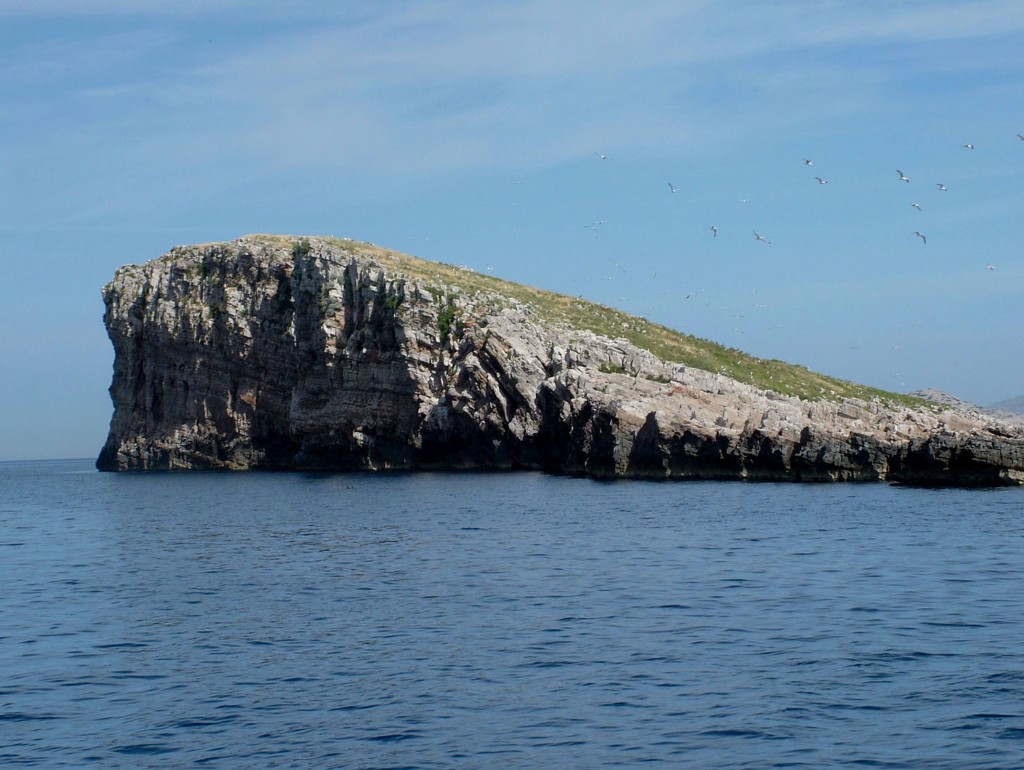 Kornati National Park / Photo: volonteri.parkovihrvatske.hr
Kornati National Park / Photo: volonteri.parkovihrvatske.hr
Do you dare to catch a young gull with your bare hands? If you do, you get to name the bird and take notes as it gets banded by a qualified employee of the Park. Banding and monitoring allows experts to track the behaviour and habitats of seagulls in order to collect data used to ensure protection of the species.
Volunteers will receive training prior to starting work and will be supervised by the Park staff. The programme takes place in May and June lasts about ten days, with volunteers expected to work seven hours a day.
Accommodation is provided and free, and in this case, it’s pretty amazing: you’ll be staying on a sailboat owned by the National Park Kornati, fully furnished and featuring 3 cabins, 6 beds, a living room, kitchen and toilet.
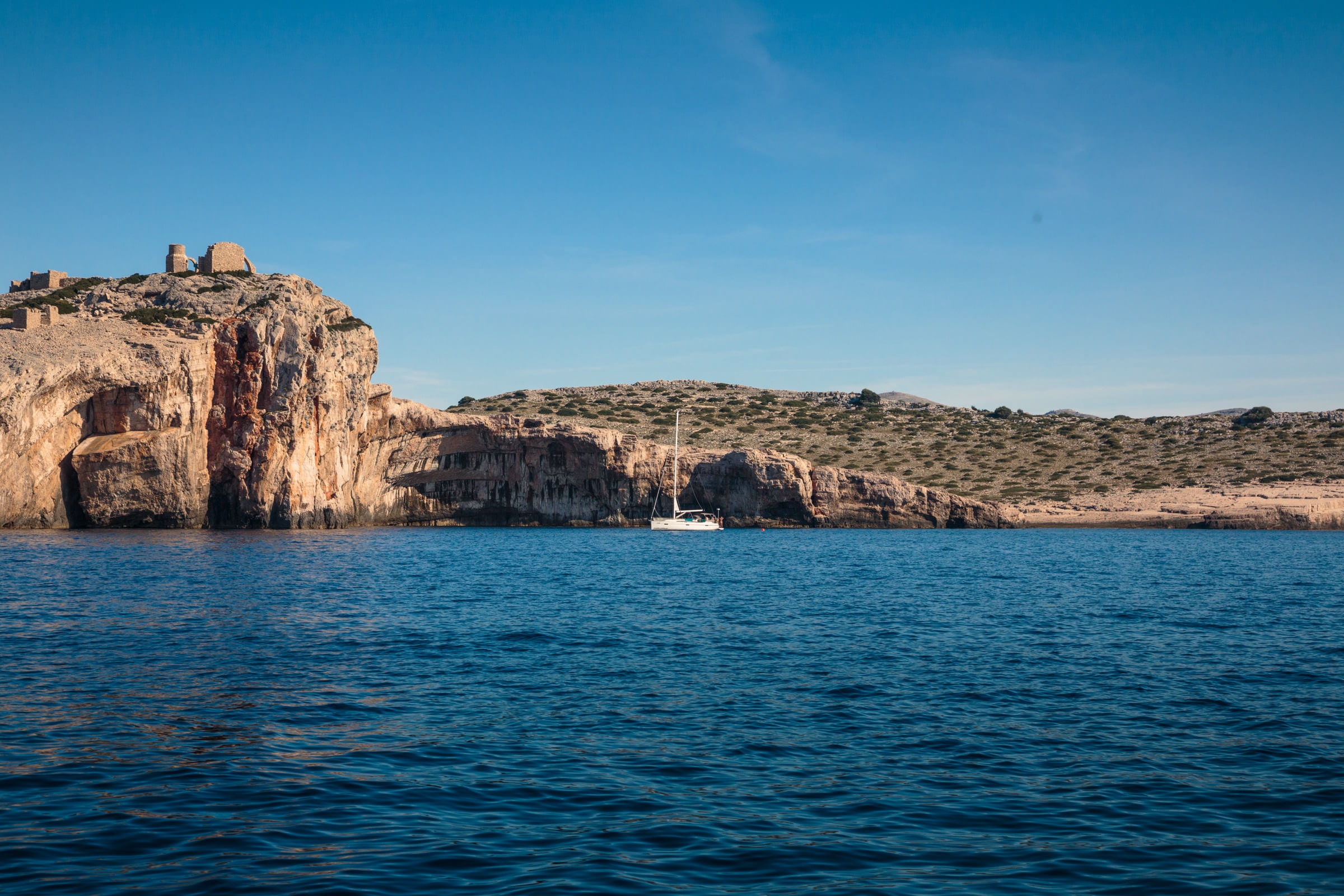 Kornati National Park / Photo © Mario Romulic
Kornati National Park / Photo © Mario Romulic
Groceries are provided free of charge, and volunteers can either prepare meals on their own or seek the help of the volunteer manager.
Volunteers have to arrange transportation to Murter island, while further transport from Murter and within the Park area is organised by the Park and free of charge.
4. Traditional Gardener in Lonjsko Polje Nature Park
Lonjsko Polje (Lonja Field) is the largest protected wetland in Croatia, located approximately 70 km south-east of Zagreb.
If you have a green thumb and don’t mind getting your hands dirty, you’d be a great fit for a traditional gardener in Lonjsko Polje Nature Park. You’d help clean up the untended plots in the Park and plant new seedlings around traditional wooden houses in the villages of Krapje and Čigoč - think of it as traditional landscape design!
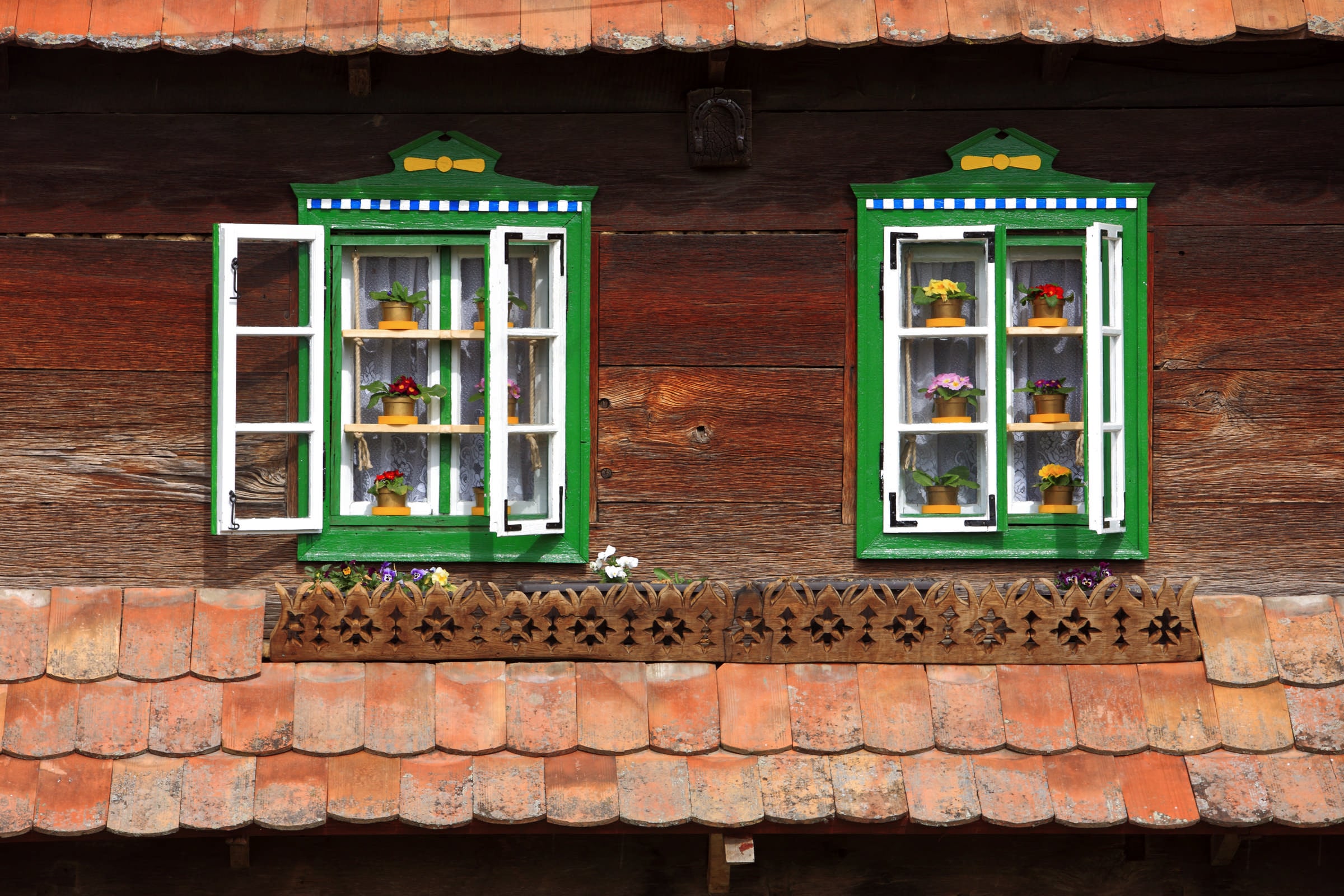 Lonjsko Polje Nature Park / Photo © Mario Romulic
Lonjsko Polje Nature Park / Photo © Mario Romulic
The programme takes place in April and lasts five days, six hours of work each.
Accommodation is provided free of charge in a dormitory in Krapje. The facility is equipped with a small kitchen and a bathroom, and has central heating. As volunteers will be sleeping on spare beds, they are required to bring their own sleeping bags. Groceries are provided free of charge, and bikes and vehicles are available to use for transportation within the Park.
5. Guardian of Plant Biodiversity in Brijuni National Park
There’s not much need for gardening on Brijuni islands - domestic wildlife and imported species such as mountain zebras and mouflons take care of landscaping by nibbling away at the grass at all times.
There’s a single item on the menu that the animals don’t like: a spiky flower called Spanish oyster thistle. Since the wildlife practically mows the lawn, it removes all natural obstacles that would prevent the spread of the Spanish oyster thistle, allowing it to take over whole areas that would otherwise be home to other plants.
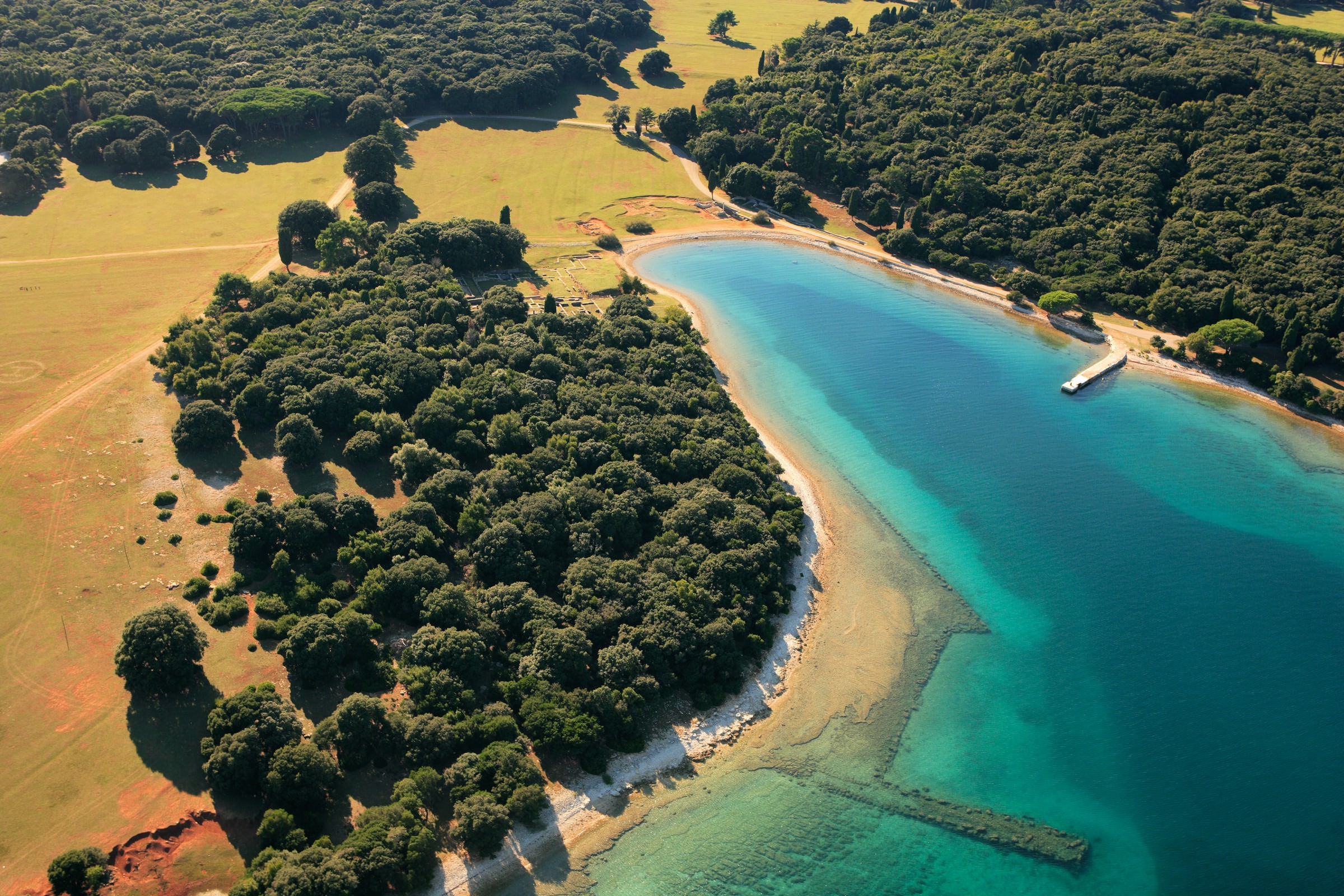 Brijuni islands / Photo © Mario Romulic
Brijuni islands / Photo © Mario Romulic
As a volunteer, you’ll help maintain the biodiversity on the meadows of Veliki Brijun island by keeping the pesky thistle in check. You’ll be removing the aggressive plant using provided gardening tools.
Volunteers are needed in the month of May and are required to put in 6 hours of work daily. Beyond that, the islands are yours to enjoy: explore the Safari and Ethno Parks, rent golf equipment and play on the golf course opened in 1922, or go for a swim at one of Brijuni’s pristine beaches.
The Brijuni are also a nice jumping off point for trips in Istria. Discover the ancient Roman monuments in Pula which is located only 7km away from Fažana, or visit the picture-perfect city of Rovinj.
 Wildlife on Brijuni islands / Photo © Mario Romulic
Wildlife on Brijuni islands / Photo © Mario Romulic
Accommodation is provided in one of the apartment buildings on Veliki Brijun island that are owned by the Park. Apartments are equipped with toilets, bathrooms, and a kitchen; rooms are shared with one or two other volunteers.
Groceries are provided free of charge and delivered to the apartment building, and one meal a day is also provided free of charge in the workers’ restaurant.
Volunteers have to arrange transport to Fažana town, and boat transportation to and from Veliki Brijun island is organised by the Park free of charge for the duration of the volunteer programme.
***
Applicants who don’t speak Croatian must be able to speak English in order to communicate with the park authorities and volunteer coordinators.
You can find more information about these and other volunteer programmes on the website Volunteer in Parks of Croatia.
Looking to apply? Fill out this form (in English), pick a programme you like and specify when you're free to participate, and the relevant programme coordinators will get back to you.
Please note that some of the programmes might not be accepting applications for the time being, or might be otherwise affected by epidemiological measures.
Check out our comprehensive Guide to the Nature and National Parks of Croatia.
Smuggling for Survival: Contraband Trails of Učka Mountain
February 19th, 2022 - In the 1930s, villages in northeastern Istria made a living running contraband over Učka mountain from a duty-free zone on the coast. The fascinating story of smuggling for survival is just part of the local history presented in the Ecomuseum Vlaški puti in Šušnjevica
At the foothill of Učka mountain in Istria lies the village of Šušnjevica. It’s not a destination to make headlines or get a mention on a must-see list. And yet, you’d be hard-pressed to find a better place to visit if you happen to like going off the beaten path.
Šušnjevica packs so much to discover, including a history of smuggling, stories of survival, and a dying language. The many facets of this incredible little place are presented in an interpretation centre named Vlaški puti (Vlach paths), introducing visitors to the social history and cultural heritage of the area.
Clandestine activities always seem to draw the most attention, so it only makes sense to start there: the unassuming village is located in the area where illicit trade thrived in the early 20th century.
For a bit of historical context, the Italian-ruled Kvarner Province at the time encompassed the wider Rijeka area, including a chunk of Slovenian territory in the north, and all the settlements lining the Opatija riviera in the south.
In 1930, the coastal part of the province was declared a duty-free zone by the Italian government (zona franca). The economic crisis left a mark on these parts as well, development of tourism was stalled, and so the decision to abolish customs was meant to shake things up a bit and give Rijeka and Opatija an edge over other popular destinations in the Northern Adriatic.
Naturally, consumer goods suddenly became much cheaper in the duty-free zone than in the rest of the province, and the local population was nothing if not resourceful. Living conditions were tough at the time, especially in rural areas, and any opportunity to make a living was seen as more than welcome.
And so the people of Šušnjevica and other villages in the area started running contraband, smuggling inexpensive goods out of the duty-free zone. They sold their produce and poultry in seaside towns, and in turn mostly purchased sugar, coffee, textile and petroleum. The illicit goods were transported on foot over Učka mountain and resold for profit in the rest of the region.
It was a dangerous business, both in terms of scaling rugged mountain slopes and avoiding the unforgiving customs officers who monitored the area. It should be mentioned that contraband goods were not smuggled out of greed for profit, but solely to ensure survival in times of scarcity.
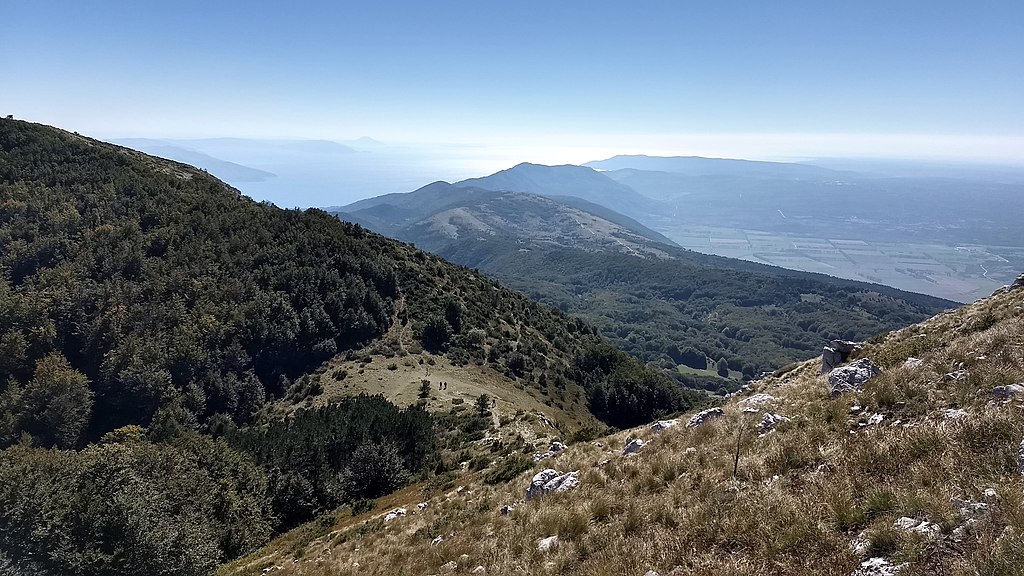 Učka mountain
Učka mountain
If you’re up for a hiking adventure, you can now retrace the steps of smugglers past. Three hiking trails have been established in the territory of Učka Nature Park to introduce visitors to the lively history of contraband in the area. A mobile app was launched, containing detailed information about the hiking routes, along with a list of accommodation providers and restaurants in the area. It’s available to download on GooglePlay and AppStore - look for Kontraband thematic trails.
All three are demanding routes and vary from 6 to 10 kilometres in length, but are well worth the effort - the trails are scenic, feature wonderful views, and you’ll get to see a few historic sites along the way. Among them is the abandoned village Petrebišća, a place of importance in regards to Slavic mythology. Another stop commemorates a young smuggler who tragically died aged 12 when he got struck by lightning on Učka mountain; following his death, every smuggler in passing would lay a stone at the memorial site, which in time grew into a massive pile of stone, the so-called gromača.
The shortest trail (KB1) starts in Šušnjevica, and those who opt to take this route should really use the opportunity to discover more about this fascinating place at the Ecomuseum Vlaški Puti.
Director of the interpretation centre Viviana Brkarić is more than familiar with the subject, having had family members who dealt in the contraband trade. Viviana speaks of her grandmother, born in 1901; times were tough, she had to support her family, and was known to make the trip to the duty-free zone and back 3-4 times a week. She’d occasionally get caught smuggling goods over Učka which landed her in prison, but she didn’t mind as it meant ‘she’d get to rest for a while’.
The prison guards soon realised she knew how to sew, and would have her sew clothes and mend bedding. According to Viviana, grandma didn’t mind as they treated her as a guest and gave her better food than to an average prisoner. Apparently, the guards were quite happy to see it was her every time she was apprehended, and were known to say ‘she’s here, she’ll now mend everything that needs mending’. (Agroklub/Blanka Kufner)
These days, Šušnjevica is home to about 70 people, most of whom are Istro-Romanian in origin and are some of the last living speakers of Vlashki (vlaški), one of the two existing varieties of the Istro-Romanian language. The other variety is called Zheyanski (žejanski) and is spoken in the Žejane area on the northern side of Učka mountain.
Once spoken in a much larger part of northeastern Istria, Istro-Romanian is now listed as ‘severely endangered’ in the UNESCO Red Book of Endangered Languages, and is inscribed in the list of protected intangible cultural heritage of Croatia. In the mid-20th century, the language was reportedly spoken by up to 1500 people, but the numbers dwindled as the harsh living conditions drove people to move to bigger urban areas in the country or emigrate to the US and Australia.
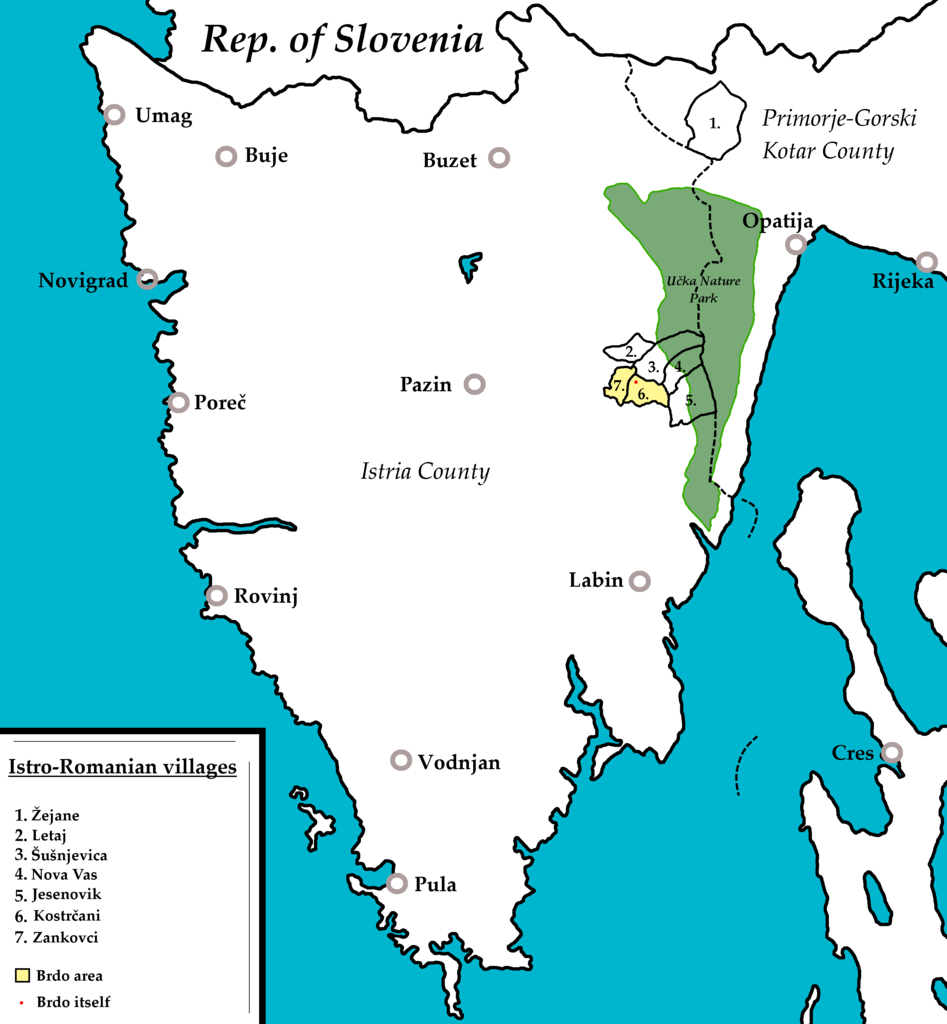
Interestingly, nowadays there are more native speakers of Istro-Romanian living in New York than in Croatia. It’s estimated there’s a community of some 300 people keeping the language alive in the diaspora, whereas the latest count from 2019 put the number of Vlashki speakers in Croatia at about 70.
The language is not passed from generation to generation anymore, and so the youngest people who actively speak Vlashki are about 50 years old.
Preserving this priceless heritage for future generations is one of the goals of the ecomuseum. The interpretation centre is designed to introduce visitors to the local history and traditions, while the media library contains materials in Vlashki and Zheyanski languages, as well as digitised publications about the language and other topics of regional importance.
Website: Ecomuseum Vlaški puti
Working hours: Monday to Saturday, 10 AM - 2 PM
World Wetlands Day Being Marked in Croatia
ZAGREB, 2 Feb 2022 - World Wetlands Day, which is observed on 2 February in memory of the conclusion of the Ramsar Convention on 2 February 1971, is being marked by various activities by nature parks and bird reserves throughout Croatia on Wednesday.
Croatia is a signatory to the convention concluded in the Iranian city 51 years ago. Croatia's entries into the list of Wetlands of International Importance are the Kopački Rit, Lonjsko Polje, Vransko Jezero (Jezero Vrana), the Crna Mlaka bird reserve outside Zagreb and the delta of the River Neretva.
They are organising presentations and birdwatching on the occasion of today's World Wetlands Day.
In 2021, the transboundary biosphere reserve which stretches along the Drava, Mura and Danube Rivers, was designated by UNESCO as the first biosphere reserve extending through five countries: Austria, Slovenia, Croatia, Hungary, and Serbia. This also is seen as a contribution to efforts to preserve wetlands.
For more, check out our lifestyle section.
Lonjsko Polje Nature Park Sees 150% Visitor Increase Compared to 2020
July the 23rd, 2021 - Some excellent news for the popular Lonjsko polje Nature Park (PP Lonjsko polje) in continental Croatia, which has experienced 150 percent more tourists when compared to pandemic-dominated 2020, including many more foreign visitors.
As Poslovni Dnevnik writes, the beautiful Lonjsko Polje Nature Park has been enjoying more visitors and much higher attendance than it did last year, and that same increased attendance should be further contributed to by the Crna roda (Black stork) Visitor Centre, the opening of which is planned for this September. The new visitor centre is part of a 20 million kuna project co-financed by European Union (EU) funds, according to Lonjsko polje Nature Park's administration.
The increase in attendance of a more than encouraging 150 percent was realised in the first six months of this year when compared to the comparable period last year. Although the figures from before the coronavirus pandemic haven't yet been reached, they point out from Lonjsko polje Nature Park that this year has finally seen the return of foreign visitors from other parts of Europe, including French, Germans Poles and British tourists.
However, most of the visitors do continue to be domestic tourists from all over Croatia, and some of them stay for a few days, using family/private accommodation, on family farms and the like, in places and villages within or near the park itself.
There are no new accommodation units being constructed for tourists, but the existing ones have been improved, they say from the park, emphasising that most visitors are still day trippers. They're mainly interested in going on the solar-powered boats on the river Strug, also known as the "Slavonian Amazon".
There are two such boats and another ''ordinary'' small boat, also used for excursions. Visitors are also currently interested in weekend programmes, with sailing and a tour of the Lonjsko polje Nature Park with departures to several lookouts/observatories, which they plan to open two more of this summer/
For more, follow our dedicated travel section.
New Lynx Emil Arrived at Velebit Nature Park From Slovakia
May 16, 2021 - Great news for wildlife in Croatia, as the Velebit Nature Park welcomed a new lynx Emil. The wild cat came from Slovakia and thus joins nearly 40 other lynxes that inhabit the park.
As turistickeprice.hr reports, Velebit Nature Park has become richer for one beautiful cat: Emil! The new lynx arrived from Slovakia and immediately rushed out of the transport box into the Velebit area. It's a lynx, the largest European cat, but the survival of this species in the Dinaric mountains is endangered due to inbreeding. After extinction at the beginning of the 20th century, the Dinaric lynx population was re-established in 1973 by the settlement of six animals from the Slovak Carpathians in Slovenia.
The adult male lynx was caught in the Slovak Carpathians and spent two months in quarantine to make sure he arrived in Croatia healthy and with the necessary antibodies to the rabies virus. It's out of the shipping box released on Apatišan, near Krasno. In accordance with the epidemiological measures, he was accompanied by a small number of spectators, among whom a special place was taken by students from the Elementary School Krasno.
‘‘Emil is the third lynx we are releasing in the Velebit area. Last year, in the Paklenica National Park, we released Alojzije, who established the terrain in the area of the municipality of Sveti Rok, and the lynx Pina, whose fate we, unfortunately, do not know. Based on the data from the photo traps, we estimate that there are about 40 adult lynxes on Velebit, so we hope that Emil will not have any problems finding a partner’’, said the director of Velebit Nature Park, Ana Brkljačić.
All lynxes present today in Slovenia, Croatia, and Bosnia and Herzegovina are descendants of these six lynxes. Nearly 50 years of breeding close relatives without contact with lynx from other populations, resulted in genetic disorders and the only solution for survival was the re-import of lynx from the Carpathians. This is exactly what the international team of experts gathered in the LIFE Lynx project, co-financed by the European Commission, is doing. In the last three years, he has been to Slovenia and Croatia, both inhabited by a total of 13 lynxes from Slovakia and Romania, and the first descendants of inhabited males and local females have already been recorded, thus stopping inbreeding.
The new lynx found a new home in the Velebit Nature Park, which is just one of the 12 natural parks in Croatia, and you can learn more about them in Total Croatia's Guide to National and Natural Parks in Croatia, HERE. Now you can find Total Croatia articles in your language!
For more news, follow TCN's dedicated page.
Krka National Park Ticket Discount: Walk for a 20% Cheaper Visit in May
April 30, 2021 - Throughout the month of May, a Krka National Park ticket discount is going to be offered in the Park's "Go and Walk" action, which provides a 20% cheaper ticket to any visitor ready to enter and exit the premises on foot.
Krka National Park, as stated on their website, is going to be inviting visitors to enter the Park on foot and get a 20 percent discount on their individual ticket price for doing so. This offer is part of the ''Go and Walk'' action, which starts on Saturday, May the 1st, and is set to continue throughout the whole month.
''The ''Go and Walk'' promotional action implies that people must enter and exit the park on foot in order to get the Krka National Park ticket discount of 20%. All of the park's other services, as well as tickets for visitors who will enter the park by boat or a bus, will be charged by as normal,'' according to Krka National Park's official website.
The discount varies pending on where you intend to go. If you decide to go to the main spectacle of the park, The Skradinski Buk waterfall by taking the hitchhiker trail, either from Lozovac or Skradinski Bridge, the promotional price is 80 kuna. Apart from Skradinski Buk, all other land localities in the park are set to be included in that price. Kids aged 7-18 accompanied by parents or guardians will have to pay only 64 kuna for their ticket, while for kids up to the age of 7, entrance to the park is free of charge.
If you decide to walk only until Roski Slap, an adult ticket will cost 40 kunas and for kids (7-18-year-olds), only 32 kuna.
The third option is also the Krka Monastary and Burnum archaeological site. An adult ticket price for that path is 32 kuna, while the children's ticket costs a mere 24 kuna.
''With the ''Go and Walk'' action, the Public Institute of Krka National Park wants to encourage the active visiting of the park, and the usage of educational-hitchhiking trails too, by reducing the usage of public transport by bus and boats and having a direct impact on lowering CO2 emissions,'' said Nella Slavica of the Public Institute of Krka National Park.
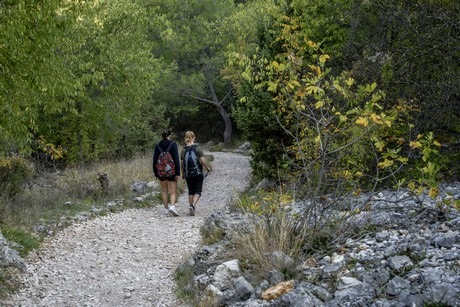
© Krka National Park
Krka National Park is also a holder of the ''Stay Safe in Croatia'' badge, and the park is being very careful in ensuring epidemical measures are respected by both the visitors and employees while informing the public about the benefits of being out in the open air during these challenging times.
Back in the former Yugoslavia, on January the 24th, 1985, the Parliament of the Socialist Republic of Croatia declared Krka a National Park, and it has enjoyed an enormous amount of popularity ever since. This gorgeous park remains a place of natural and cultural heritage, a place to learn, a place to rest, and a place to enjoy a lovely escape from the stress of modern life.
Learn more about Krka National Park on our TC page.
For more about travel in Croatia, follow TCN's dedicated page.
Croatia Declares Mount Dinara 12th Croatian Nature Park!
February 5, 2021 – Croatia gets one more protected area as Mount Dinara becomes the 12th Croatian nature park.
Today, the Croatian Parliament proclaimed the Mount Dinara Nature Park. The Park will encompass the area of the Dinara massif (Dinara, Troglav, and Kamešnica), the Cetina River's upper course, and the Hrvatačko, Paško, and Vrličko karst fields. The highest peak of Croatia – Sinjal (1831 m), is located in the Park, too. These mountains are part of the Dinaric Alps, also commonly known as Dinarides, a mountain range in Southern and Southeastern Europe.
As the Minister of Economy and Sustainable Development Tomislav Ćorić said, the Mount Dinara Nature Park proclamation is an important moment for nature protection in Croatia, reports the Ministry.
"Mount Dinara Nature Park has become the 12th nature park in Croatia. Together with eight national parks, we have completed a set of 20 protected areas in the categories of nature and national parks," said the Minister.
Source: Ministry of Economy and Sustainable Development
With an area of 63,052 ha, Mount Dinara Nature Park stretches through Šibenik-Knin and Split-Dalmatia counties. It is thus the second-largest nature park in Croatia, after Velebit Nature Park.
With the proclamation of Mount Dinara Nature Park, the share of protected areas in Croatia's land area, together with the area of the ecological network Natura 2000, makes 39 percent of Croatia's land area protected. There are 11 areas of the Natura 2000 ecological network in the Park area – two conservation areas important for birds and nine conservation areas important for species and habitat types.
The Park area is rich in other values derived from the centuries-old tradition of human use of space – semi-natural habitats, indigenous breeds and varieties, and rich cultural and historical heritage. The Dinaric karst is a phenomenon recognized at the international level that covers a much wider area, and it was named after the Dinara as a type locality.
Source: Ministry of Economy and Sustainable Development
Over 1000 plant species live here, a fifth of the total Croatian flora, and 75 of them are national endemics. Also, over 20 endemic animal species live in this area, and due to the untouched vast complexes of forests and grasslands, it is essential for our large carnivores – wolves, bears, lynxes. High Dinaric grasslands are the most important locality in Croatia for the yellow mountain viper (Vipera ursinii macrops), an endemic Dinarides snake species.
The protection of this area will have positive effects on nature conservation, but also the population and the economy of the wider region. The revitalization of extensive livestock is expected, as well as other traditional activities and new opportunities for sustainable use of space.
Source: Ministry of Economy and Sustainable Development
To read more news from Croatia, follow TCN's dedicated page.
Wolf Spotted on Papuk After More Than 60 Years
December 18, 2020 – The last wolf was seen in the late 50s or early 60s, but during November, the wolf was again seen on Papuk. Based on the guard service footage, the Papuk Nature Park authorities are sure that this endangered species has returned to their area.
According to the report from the Papuk Nature Park, although the wolf has not been spotted so far, this video is real proof that Papuk is the place where the wolf returned. Recently, there were only stories about the wolf's appearance, but now this has been confirmed by numerous experts.
'The wolf does not pose a danger'
To explore the terrain and start monitoring the signs of wolf's appearance, the Papuk Nature Park Guard Service, experts from the Institute for Environmental Protection and Nature of the Ministry of Economy and Sustainable Development, and the Faculty of Veterinary Medicine, University of Zagreb organized the first field trip. They determined how conservationists, foresters, and hunters will monitor, record, and store all signs that would indicate the wolf's presence.
"After we unequivocally proved the presence of wolves in the Park, we conducted interviews with almost all users of this space. We explained to them that wolves' appearance is not unexpected, but also the most important thing at this moment, that it does not pose a danger to a wildlife fund, nor to cattle breeders. Earlier speculations about the damage to livestock in the wider area around Papuk proved to be wrong because it was not wolf attacks, but dogs that were unattended wandering the area," said Alen Jurenac, the director of the Park.
Jackal and wolf easy to mistake
As it is important to monitor the wolves' appearance, a meeting was organized in Jankovac on the premises of the Papuk Nature Park. They discussed the fauna present in the area, and especially the jackal population that records healthy and strong individuals, very often highly trophy in a shooting.
They also concluded that the wild animal population (deer and roe deer) is in excellent condition. Fear was expressed since the jackal and wolf are very easy to mistake, so that the wolf could die in this hunting season. Therefore, regular information on implemented and planned activities in the field is proposed.
The Park points out that they informed all hunting associations in the area about the wolf's appearance, and they also conducted a field tour of the Park area and hunting grounds, especially the location of the wolf snapshot. They also agreed on a future common way of monitoring them and selecting suitable sites for setting photo traps.
There are probably more of them
The last wolf in the Papuk area was shot in the late '50s or early '60s.
"All these years, there have been stories that the wolf was seen somewhere, but there was never any evidence. Our footage is the best proof of how the wolf re-settled on Papuk. Whether it is about him as an individual or there are more of them, it is quite debatable. It can be seen that he is younger, about a year old, and that he is playful. Given that wolves remain in the pack until the second year of life, because they are only then sexually mature, it is to be assumed that several other individuals did not enter the frame," Jurenac told Večernji list.
They set ten photo traps to keep a closer eye on him.
"Of course, the footage is not the only evidence, we are also looking at the traces the wolf leaves behind, and we are waiting for the leaves to fall off completely, so we will be able to follow them more easily. The wolf is strictly protected, and his return to Papuk is positive news," concluded Jurenac.
To read more news from Croatia, follow TCN's dedicated page.
Dinara Nature Park: Croatia to Get Twelfth Incredible Nature Park
As Poslovni Dnevnik writes on the 22nd of May, 2020, a public presentation as part of the public insight into the Law on the Proclamation of the Dinara Nature Park was held recently in Knin.
The aforementioned Act will protect the Dinara massif (Dinara, Troglav and Kamešnica), the source part and the upper course of the river Cetina and the karst fields (Hrvatačko, Paško and Vrličko) along the Cetina river in the category of a nature park.
The event was attended by the Minister of Environmental Protection and Energy, Dr. Sc. Tomislav Ćorić, the Prefect of Šibenik-Knin County, Goran Pauk, the Prefect of Split-Dalmatia County Blaženko Boban, the Mayor of Knin dr. Sc. Marko Jelić and numerous citizens, representatives of non-governmental organisations and other interested parties.
Tomislav Ćorić pointed out that this is a special week for nature protection in Croatia. On May the 20th, 2020, the European Commission published a new Biodiversity Strategy for the period up until the year 2030, recently we marked Natura 2000 Day and then International Biodiversity Day and Nature Protection Day in Croatia, and this coming Sunday marks European Parks Week.
"The Dinara Nature Park will be the 12th nature park in the Republic of Croatia and together with eight other national parks, we'll complete one set of 20 such protected areas. With the proclamation of the Dinara as a nature park, the share of protected areas on Croatian land will increase from 12 percent to 13 percent, and under the European ecological Natura 2000 network, there will be an increase from 36.7 percent to 39 percent of the European Union's territory. This clearly shows what these 63,000 hectares of newly protected area will mean for the total capacity of protected areas in Croatia and, ultimately, what it will mean for the future of biodiversity in Croatia,'' said Minister Ćorić.
He emphasised that this is the direction in which the whole of Europe and the world should head in, and that is the direction of nature protection, biodiversity conservation and environmental protection for those who will come long after we have died.
"Of the 63,000 hectares of the future Dinara Nature Park, almost two thirds of the area is located in Split-Dalmatia County," said Split-Dalmatia County Prefect Blaženko Boban, adding that this is an area bordering Bosnia and Herzegovina and expressed hope that that part of the Dinara area on the territory of Bosnia and Herzegovina will also be protected.
Šibenik-Knin County Prefect Goran Pauk said that the proclamation of the Dinara Nature Park "will open this beautiful area up as a potential for the development of the entire area in a way that doesn't disturb the original natural beauty it boasts, and at the same time make the Dinara more accessible to both locals and visitors,''
"I hope that the first session of Parliament will promulgate this law. We'll have a nature park and we'll protect what's most important to us. The Krka and Cetina rivers have their springs in the future Dinara Nature Park and without them there would be no life for us either,'' said the Mayor of Knin, Marko Jelić.
The adoption of the proposed Law on the Proclamation of the Dinara Nature Park would create all of the legal preconditions for the establishment of a public institution, the adoption of a spatial plan for special features and the Dinara Nature Park management plan, which would further regulate the protection, improvement and general use and management of this protected area and its abundant nature.
The future Dinara Nature Park envisages the protection of an area of 63,052 hectares in both Šibenik-Knin and Split-Dalmatia counties, which is the largest area to be called a nature park after Velebit (200,000 hectares).
Otherwise, the overall Dinara area is extremely rich in endemic and endangered species. It is home to over 1000 plant species (one fifth of the total Croatian flora), of which 75 are endemic. Over 20 endemic species of animals are known, including one very special little mammal - the Dinaric vole.
The highest peak in the Republic of Croatia, Sinjal, which is 1831 metres tall, is also found there.
Make sure to follow our lifestyle page for more.


